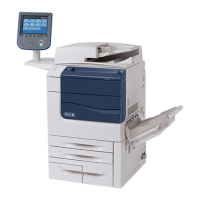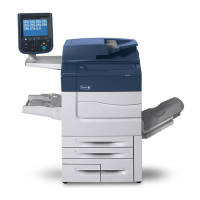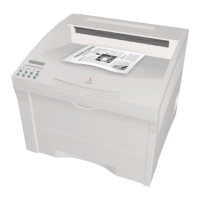and
the
IDLE
indicator is illuminated.
In
the
IDLE
state
the
load commands,
the
reset commands,
and
the
RUN
com-
mand
are
enabled.
The
I/O
system may
continue
to
perform
I/o
operations
initiated
prior to
the
ZCHLT
command,
even
though
the
BP
is
halted.
Note
that
the
processor
HALT
status is not
set
by
the
ZCHLT
command, but is CalJsed by
internal processor conditions
(see"
Processor-Control Word").
ZCftUN
SYSTEM
RUN
The
RUN
command
is
accepted
only
if
the
BP
is
in
the
IDLE
state.
When
the
FUN command
is
accepted,
the
BP
is
allowed
to
execute
its
instruction stream. 'On
the
SCP,
the
IDLE
indicator
is extinguished
and
the
RUN
indicator
is
illuminated,
subject
to
the processor control word
and
system status.
When not
in
the
IDLE
state,
the
system does not
accept
any
of
the load and reset control commands. Attempti ng
to
enter
any
load
and
reset
control command while
the
system is in
the
RUN
mode results in
an
error message being displayed
on
the
control
console
(see Table
F-
).
DIAGNOSTIC
CONTROL
COMMANDS
Diagnostic control commands
facilitate
isolating software
and
hardware problems by providing
single-instruction
ex-
...
II
....,
_
.11
___
-
..
________
L _
___
...
eCUTlon,
as
well
as
petmlffll'9
It:\JU/
WIIIC
u\.O\.Oc:):)
IV
"IUIlY
processor internal control registers and system memory
loc-
ations.
To
perform diagnostic commands,
BP
instruction
execution
must
be
interrupted and
the
ECS
control mode
altered.
This is accomplished by
the
ENTER
P-MODE
com-
mand (a "CONTROL-P"
character
generated
by depressing
CONTROL
and
P keys simultaneously).
Once
in
P-Mode
the
system is forced
into
the
IDLE
state
and
the
BP
stores
and
fetches
data
or
executes
single instructions only upon
request from
the
operator through
the
SCC.
Note:
Within this
text
the
control-P
character
is
repre-
--
sented by
the
following symbol,
PC.
The diagnostic control (P-Mode) command format differs
from
the
basic command format. Hexadecimal
digits
are
immediately
echoed
and
stored
to
be used as
data
or
ad-
dress depending on
the
following command. The system
truncates
the
data
stream to
eight
hexadecimal
digits
and
assumes leading zeros
if
less than
eight
characters
are
en-
tered.
All non-hexadecimal
characters,
except
basic
(ZC)
format commands,
are
treated
as P-Mode commands.
If
the
character
is not in
the
allowed
command
set,
it
is
echoed
followed by a question mark
liN?"
and
no
action
results.
Valid
commands
are
echoed;
the
requested
operation
is
then performed and a P-Mode
data
display of
the
form
"P:DDDDDDDD
@ AAAAAAAA" is
generated
on
the
next
line
of SCC printout. The
II
plI
represents
the
processor
ad-
dress (normally 0);
the
II
D"
field (eight hexadecimal digits)
represents
the
data
in
the
location
specified
in
the
II
All
field
(eight hexadecimal digits). The first hexadecimal
digit
of
the
A field is
XIOI
for memory addresses and X
I
8
1
for internal register addresses. All
valid
commands,
except
EXIT
P-MODE,
produce
a display in this format.
The
allowed
diagnostic command
set
is listed in Table 22.
An
example of
the
resulting printout is shown in
the
section
entitled
.rOperating
Procedures
and
Information".
pC
ENTER
P-MODE
The
ENTER
P-MODE control command is
generated
by
de-
pressing
the
CONTROL
and
P keys, simultaneously (pc).
The system is forced
into
the
ID
LE
state
and
the
processor
wi
II
execute
di agnostic control commands
entered
from
the
System Control Console. The
ECS
remains in
the
P-Mode
until
an
EXIT
P-MODE command (described below) is
entered
or
the
ZC
format commands
SYSTEM
RUN
or LOAD
NORMAL
are
entered.
Successful entry into
the
P-Mode
is
indicated
by a P-Mode display on
the
SCC.
(P-Mode)
SELECT
INTERNAL
REGISTER
ADDRESSING
(P-Mode)
/
SELECT
MEMORY ADDRESSING
These commands specify
the
storage
element
whose
con-
tents
are
to
be
displayed
and
operated
upon with subsequent
_
~I
T'I
_
..
/11 1
___
..
_
I.
___
r _
II
_ .
,-.
__
.
_.
L
____
.J
__
-
____
I
~ornnlUllU;).
lilt::
/
\.OIIUIU\.OIt::1
IUIIVWII'9
U
IIC.II.UUCll..III1UI
data
stream speci
fi
es a memory address;
the
".
II
character
specifies
an
internal processor control register address. All
address
calculations
and memory accesses
are
subject
to
the
write
lock keys, address mode, and mapping bits in
the
program status words.
(P-Mode)
+
ADD
TO-
SELECTED
LOCATION
The
"+"
character,
following a hexadecimal
data
stream,
causes
the
value
of
the
data
to
be
added
to
the
contents
of
the
selected
storage
element.
(P-Mode)
SUBTRACT
FROM
SELECTED
LOCATION
The
II_II
character,
followi
ng
a hexadecimal
data
stream,
causes
the
value
of
the
data
to
be
subtracted
from the
contents
of
the
selected
storage
element.
(P-Mode)
M
STORE
IN
SELECTED
LOCATION
The"
Mil
character,
following a hexadecimal
data
stream,
causes
the
data
to
be stored
in
the
selected
storage
element.
Control Commands 139

